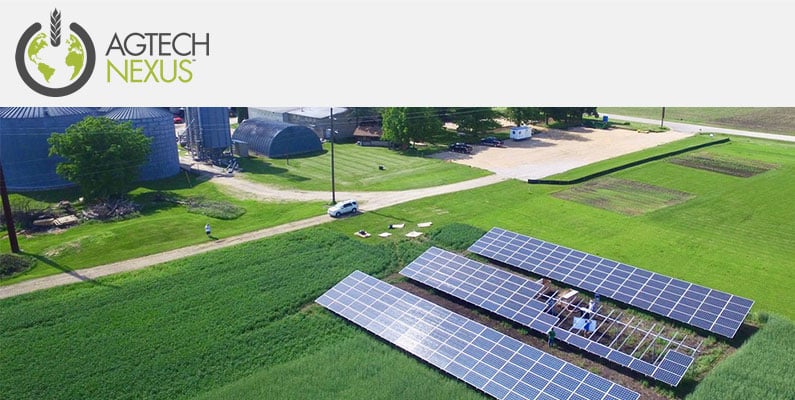Ag Tech Nexus offers glimpse of tech future
From nitrogen-applying robots to CRISPR-enhanced produce with extended shelf life: what’s trending in ag tech?

This past July, Marketing to Farmers was honored to be included as a partner in Chicago’s first AgTech Nexus USA. As well, Rhea + Kaiser President and CIO Jeff Walter moderated the conference’s Innovation Showcase, discussing the newest items on the market and the importance of bringing farmers into the ag tech developmental process, well ahead of marketing the products to them.
One of the cornerstones of Marketing to Farmers isn’t just what we present to others and showcasing our knowledge, but what we learn from our peers by engaging with other professionals in the field. This is our continuing education and we’re always learning.
And one of the key points to launch AgTech Nexus was how ag tech is defined. Ag tech tends to be defined in a very narrow and one-dimensional manner, literally surrounded by the electric or digital mechanics of technology. And though the digital and mechanical portion of it is often integrated, what we discovered is that the context of technology takes many forms, far beyond our original perception.
Literature provided by AgTech Nexus, Global Ag Investing, defines ag tech within the following categories:
- Plant health and nutrition – this includes novel plant biologicals, breeding techniques, soil amendments, bio-stimulants and bio-pesticides
- Animal health and nutrition – this includes animal disease vaccines and medicines, new animal feeds, genetic makeup and livestock management
- Equipment and data – this includes aerial monitoring, precision agriculture, agricultural equipment linked by the internet, big data and data analysis
- Food technology – includes cultured meat, novel ingredients, plant-based proteins, food safety, new production methods and agricultural marketplace
This means that the concept of technology is not limited to hardware, software and new chemical or biological solutions, but it is the entire process of developing and delivering such products to the marketplace.
As any of these technologies scale and come to market, they rely on multiple systems to properly integrate and provide value and ease of use, which inserts questions of compatibility, data syncing, cost and separate proprietary entities that must link with one another. Ultimately, there exists the desire for a centralized system to bring everything together in one overarching digital farm management structure that does not yet exist. However, with the limitations of broadband that are still a challenge for many farmers, one overarching system could also be too much.
AgTech Nexus also gave us a peek into the trends. There is a heavy influence on environmental sustainability and technology that influences behavior modification. So, we saw continuing interest and utilization of drones and their ability to capture greater amounts of data in a timelier fashion, as well as the ability to collect images, map and analyze information that is used for disease identification, weather impact, and other crop decision making.
We also saw an impressive amount of new technology surrounding robotics. There are robots that harvest; those that sort and package fruit; variations used for identifying and spraying of fertilizers and herbicides (depending on the plant); weed smashers; and technology that literally moves rocks. As well, many of these robots use solar power, are self-driving, built stronger and are made with parts that are easier to replace. The machines are intended to work harder and last longer, with fewer replacements.
The biggest question of AgTech Nexus and in moving forward in the ag tech sector is the value of the investment. To what point is this new technology worth the time and financial input? There are few instruments and objects that aren’t worth the investment but are more a question of necessity. As marketers, we must find the value of necessity in these products and learn how either they will be compatible with an overarching system of digital farm management or have enough of a unique purpose and function that the potential lack of compatibility will not be a limitation.
As we continue our partnership with AgTech Nexus, we look forward to the developments and progress in all of the products and projects we had the opportunity to explore during our time there. The process of bringing technology in any capacity to market is long and enduring, but we are excited to have a glimpse into what’s on the ag tech horizon.
Never miss an article.
Get the latest sent straight to your inbox.
Related Articles
The conference series makes its mark on The Windy City July 22-23
Chicago is quickly ...

